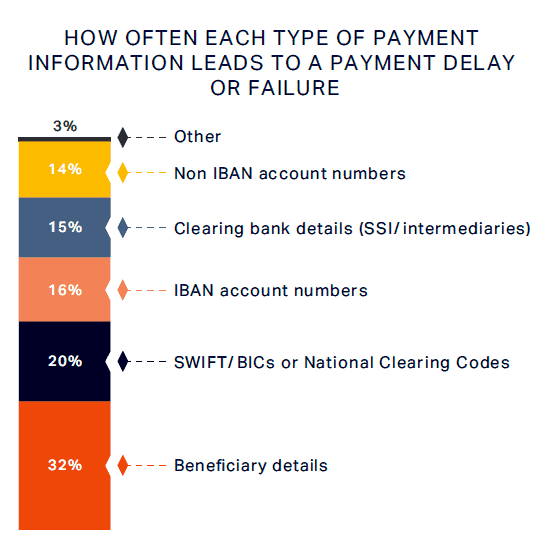Key findings:
- 60% of organizations reported losing customers as a result of failed payments
- Fewer than 50% are actively trying to improve their payments process despite nearly all respondents citing disappointment with failure rates
- Over one-third of payment data elements are still validated manually and two-thirds of organizations identified reducing manual processes as extremely challenging
How many times has it happened to you? You are ready to pay the bill and suddenly something happened, and you had to (a) change the payment model – card to cash; (b) you were told to drop everything and leave; (c) the queue is so long you decided you can shop elsewhere or come back another time.
A failed payment is a payment that is rejected by a beneficiary bank or an intermediary bank in the payment flow. Payments can fail for several reasons including inaccurate or incomplete information, data entry issues due to human error or poor reference data and validation tools.
The cost of failed payments is estimated to have cost the global economy $118.5 billion in fees, labour, and lost business in 2020, according to the latest study from Accuity.
The total cost of failed payments in the Asia Pacific is $43.7 billion. Globally, banks spent on average approximately $360,000 in 2020 on failed payments – which includes all fees, labour and costs related to customer attrition – whereas the average corporate firm spent just over $200,000.
Key themes that emerged from the findings include:

Customer experience matters: 80% of organizations with over 20,000 failed payments per day reported having lost customers as a result. Failed payments have the biggest impact on customer service, with 37% of organizations reporting a severe impact and nearly 50% indicating some impact.

There is a tipping point: Although fewer than 50% of respondents stated they were actively trying to reduce the number of failed payments, the study found that a failed payments rate of 5% or above was the tipping point that compelled 80% of organizations to act.

Validation processes make a difference: Account number issues were the cause of one-third of failed payments and inaccurate beneficiary details were the result of another third. The survey also showed that 66% of organizations found reducing manual processes extremely challenging. Manual processes introduce human error and slow down the payment process, making it less efficient.
Reflecting on the report, Accuity’s the global head of KYC and payments product management, Dalbir Sahota says while organizations are well aware there is a cost to failed payments, most do not fully understand the impact both financially and from a customer retention standpoint.
“Tangible costs such as fees and labour might be easier to measure, but the intangible - including customer relationships - can be more difficult to repair. The payments market is fiercely competitive, so it is vital for organizations to take greater measures to improve their payments data to reduce their failed payment rate,” he continued.





